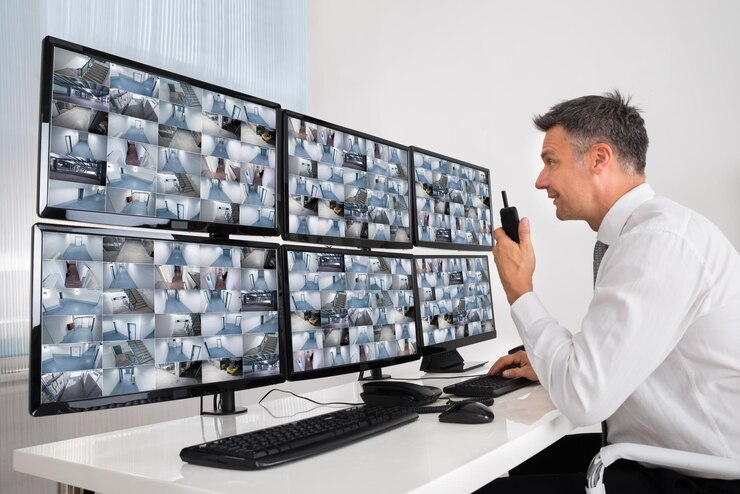In an era where security is both a necessity and an expectation, businesses and residential establishments face a critical decision—manned security or electronic surveillance? Both solutions offer substantial benefits, but the ideal choice depends on a range of factors including the type of premises, budget, threat level, and operational dynamics. Understanding the strengths and limitations of both can help organizations build a fortified and responsive security framework tailored to their unique needs.
Understanding the Basics of Manned Security
Manned security involves the physical presence of trained personnel on-site. These professionals serve not only as deterrents but also as the first responders in any emergency. Whether it’s patrolling the premises, checking IDs, managing access control, or responding to unusual activity, the human element introduces flexibility and intuition that technology cannot fully replicate.
Advantages of manned security include:
- Immediate response: Security personnel can take real-time actions during emergencies—whether it’s dealing with intrusions, managing crowds, or diffusing disputes.
- Physical presence: The mere sight of uniformed guards significantly deters criminal activity.
- Custom interaction: Trained guards can assess suspicious behavior, communicate effectively with visitors, and make critical judgments on the spot.
- Adaptability: Human guards can modify their approach depending on evolving threats and environmental changes.
Exploring the Power of Electronic Surveillance
On the other hand, electronic surveillance encompasses a wide array of technologies—CCTV cameras, motion detectors, biometric access control, infrared sensors, and AI-powered monitoring tools. These systems operate around the clock and can be customized to monitor specific areas, activities, or entry points.
Benefits of electronic surveillance include:
- 24/7 monitoring: Unlike humans, machines don’t need rest. They provide uninterrupted vigilance across vast areas.
- Data recording: Every movement or incident is recorded, offering valuable evidence for legal proceedings or internal investigations.
- Remote access: Many modern systems allow real-time monitoring and control through smartphones or desktops, offering convenience and centralized command.
- Cost-effective over time: While initial setup costs may be high, maintenance is generally low compared to staffing expenses.
Choosing Between Manned and Electronic Security: Factors to Consider
The decision is rarely binary. Instead, it’s about understanding which solution—or combination thereof—will deliver the most robust protection for your particular environment.
1. Nature and Size of the Premises
For large commercial properties, industrial zones, or multi-level residential complexes, relying solely on manned guards might be impractical. Surveillance cameras and motion sensors can cover wide areas more efficiently. Conversely, smaller establishments or places with high footfall (like retail stores or banks) benefit significantly from on-site personnel who can manage real-time incidents.
2. Type of Threats Faced
If the primary concern is theft, intrusion, or unauthorized access, a blend of electronic surveillance and strategic guard placement may be ideal. For locations prone to confrontations or crowd-related disturbances, manned security is essential due to their de-escalation capabilities and presence.
3. Budget and Resource Allocation
Electronic surveillance services may involve a significant upfront investment in technology and infrastructure. However, they tend to incur lower operational costs over time. Manned guarding by contrast, require consistent salaries, training, and administration, making them more expensive in the long term but immediately effective.
4. Need for Real-Time Human Judgment
No algorithm can replicate human intuition. In situations where immediate judgment, empathy, or negotiation is required—such as VIP protection, crisis management, or handling distressed individuals—manned security proves invaluable.
5. Legal and Regulatory Requirements
Certain industries, like banks, airports, and government buildings, may be legally mandated to employ manned guards or specific electronic systems. Always consider local compliance norms before making your decision.
The Hybrid Approach: Best of Both Worlds
In many modern security frameworks, a hybrid model proves to be the most effective. By integrating manned guarding services with electronic surveillance, organizations can create a layered defense system. Cameras can monitor blind spots and alert guards in real-time, while trained personnel investigate anomalies or intervene when technology alone falls short.
For example:
- Surveillance cameras at entry and exit points can identify suspicious behavior.
- Motion sensors can trigger alerts after hours, prompting guard inspection.
- Biometric access control can limit entry, while a guard ensures proper conduct at gates.
This synergy not only enhances overall security but also reduces workload and optimizes efficiency. It brings together the precision of machines with the discernment of humans.
Challenges in Implementation
While the benefits of both systems are well-documented, challenges remain in their deployment:
- Technical issues: Cameras may malfunction or be compromised without proper maintenance.
- Human error: Even trained guards can make mistakes or overlook critical signs.
- Integration costs: Combining both systems requires strategic planning and investment to ensure seamless communication and response protocols.
Therefore, it is crucial to work with security experts who can assess the site, identify vulnerabilities, and recommend a balanced, customized solution.
Conclusion: Make the Right Security Choice
Security is not a one-size-fits-all solution. Choosing between manned and electronic options—or integrating both—requires a detailed assessment of your facility, threat profile, budget, and operational expectations. An optimal security plan ensures peace of mind, mitigates risks, and protects lives and property effectively.
Whether you’re running a commercial building, a residential complex, or a critical infrastructure site, the combination of technology and human vigilance remains the gold standard in security design. Tailoring this mix to your unique needs will yield the best results—proactive, responsive, and resilient protection.


